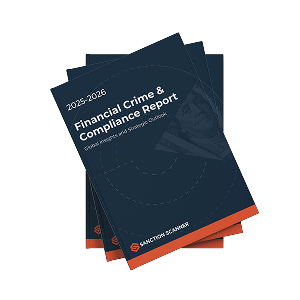Financial Crimes are criminal activities carried out by individuals or criminal organizations to provide economic benefits through illegal methods. Financial crimes, which have become a critical issue in recent years worldwide, cause significant harm to the economy and society. Income from financial crimes corresponds to a substantial proportion of global GDP. Therefore, regulatory bodies constantly develop new tactics to combat financial crimes. In addition, with the development of technology, criminals develop new tactics. Today's most common financial crimes are terrorist financing, money laundering, corruption, and fraud.
What is the Meaning of Financial Crime?
Financial crime is a broad term used to describe criminal activities that involve money or other financial resources. Financial crime refers to any illegal activity that involves the use of financial systems, institutions, or instruments for illicit purposes, typically with the goal of generating profits for the perpetrators. Financial crimes can take many different forms, from money laundering to fraud, embezzlement, insider trading, and cybercrime.
These crimes are often committed by individuals or groups seeking to profit from illegal activities, such as drug trafficking, human trafficking, or terrorism. Financial crimes can have serious consequences for individuals and society as a whole, including economic instability, loss of public trust in financial institutions, and erosion of the rule of law.
What is an Example of Financial Crime
Financial crime is a complex and ever-evolving problem that requires a multifaceted approach to combat. Law enforcement agencies, regulatory bodies, and financial institutions all play important roles in detecting and preventing financial crimes. Effective measures to combat financial crime include strengthening anti-money laundering and counter-terrorist financing regulations, enhancing cross-border cooperation, and leveraging technology and data analytics to identify suspicious activities.
Terrorist Organizations need financial support to achieve their goals. Terrorist organizations raise funds through criminal activity, self-financing, and legitimate resources.
Money laundering is the process of turning earnings from crime into legal earnings. Cartels and gangs are the most common money launderers. Some sophisticated techniques may include different financial institutions such as accountants, shell companies, and financial and consulting institutions. These criminal organizations use assets that make money laundering and increase complexity to finance money laundering in illegal money transfers between countries and terrorism. As a result, regulators have obliged financial institutions to implement various controls to prevent financial crimes. These are commonly referred to as "anti-money laundering obligations." Organizations that do not fulfill their AML obligations are punished with fines by regulatory bodies.
Main Types Of Financial Crime
| Type | Overview |
|---|---|
| Money Laundering | Money laundering is a financial crime that involves disguising the proceeds of illegal activities such as drug trafficking, bribery, or fraud as legitimate funds. The goal is to make the funds appear legitimate so they can be used without detection. This process usually involves a series of transactions that make it difficult to trace the origin of the funds. |
| Terrorist Financing | Terrorist financing is the process of providing funds or financial support to individuals or groups who carry out terrorist activities. This can include providing money to purchase weapons or fund terrorist attacks. |
| Fraud | Fraud is a type of financial crime that involves intentionally deceiving someone for personal or financial gain. Examples of fraud include identity theft, investment scams, and insurance fraud. |
| Cybercrime | Electronic crime, also known as cybercrime, is a type of financial crime that involves the use of computers or the internet to commit fraudulent activities. This can include hacking into computer systems to steal personal information, credit card fraud, or phishing scams. |
| Bribery and Corruption | Bribery and corruption are financial crimes that involve offering or accepting money or other benefits in exchange for favors or preferential treatment. This can occur in government, business, or other sectors. |
| Tax Evasion | Tax evasion is the illegal non-payment or underpayment of taxes by individuals or businesses. This can involve failing to report income, claiming false deductions, or hiding assets. |
| Embezzlement | Embezzlement is the theft or misappropriation of funds that have been entrusted to someone. This can occur in a variety of settings, such as in the workplace or in nonprofit organizations. |
| Market Abuse and Insider Dealing | Market abuse and insider dealing involve using inside information to make financial gains or manipulate markets. This can include insider trading, spreading false rumors, or manipulating stock prices. |
| Information Security | Information security involves protecting sensitive information from unauthorized access or disclosure. This can include theft of personal information, hacking into computer systems, or corporate espionage. |
Measures Against Financial Crimes
There are many national and global organizations that combat financial crimes. For instance, The Financial Crimes Enforcement Network (FinCEN) is a US and Treasury Department's office that collects and analyzes financial transactions to combat national and international money laundering, terrorist financing, and other financial crimes. These organizations publish regulations that companies have to comply with. Regulators impose penalties on organizations that do not comply with regulations. Financial institutions must comply with compliance regulations such as AML and KYC requirements.
With the development of technology, methods of combating financial crimes are developing. With the developing RegTech sector in recent years, solutions to combat financial crimes have increased. AML solutions, developed with artificial intelligence and machine learning methods, enable the detection and prevention of financial crimes. AML solutions are increasing year by year because manual control methods are dysfunctional and waste a lot of time.
How Do You Identify Financial Crimes?
- Monitoring suspicious financial transactions: Keep an eye on any transactions that are unusually large, frequent, or involve suspicious parties.
- Recognizing red flags: Look for warning signs such as inconsistencies in financial records, unexplained wealth, sudden changes in lifestyle, and reluctance to provide documentation or answer questions.
- Conducting thorough due diligence: Verify the identities of customers, clients, and business partners to ensure they are not involved in illegal activities.
- Keeping up to date with regulations: Stay informed about financial laws and regulations to ensure compliance and identify any potential violations.
- Collaborating with law enforcement: Work with authorities to report and investigate suspected financial crimes, such as money laundering, fraud, and embezzlement.
- Implementing strong internal controls: Establish policies and procedures to prevent, detect, and respond to financial crimes within your organization.
- Conduct regular audits and reviews: Monitor financial activities to identify anomalies or irregularities indicating potential financial crimes.
Fighting Financial Crime with Sanction Scanner
Sanction Scanner provides solutions that support companies' fight against financial crimes and compliance with AML regulations. AML Name Screening Software provides companies to control their customers in sanction, PEP, and adverse media data during the customer onboarding and customer monitoring process. Transaction Screening Software enables financial institutions to control the receiver and sender of money transfer transactions in sanction, PEP, and adverse media data. AML Transaction Monitoring Software, on the other hand, ensures that all transactions of all customers are automatically controlled according to risk rules and scenarios and anomaly transactions are detected.


